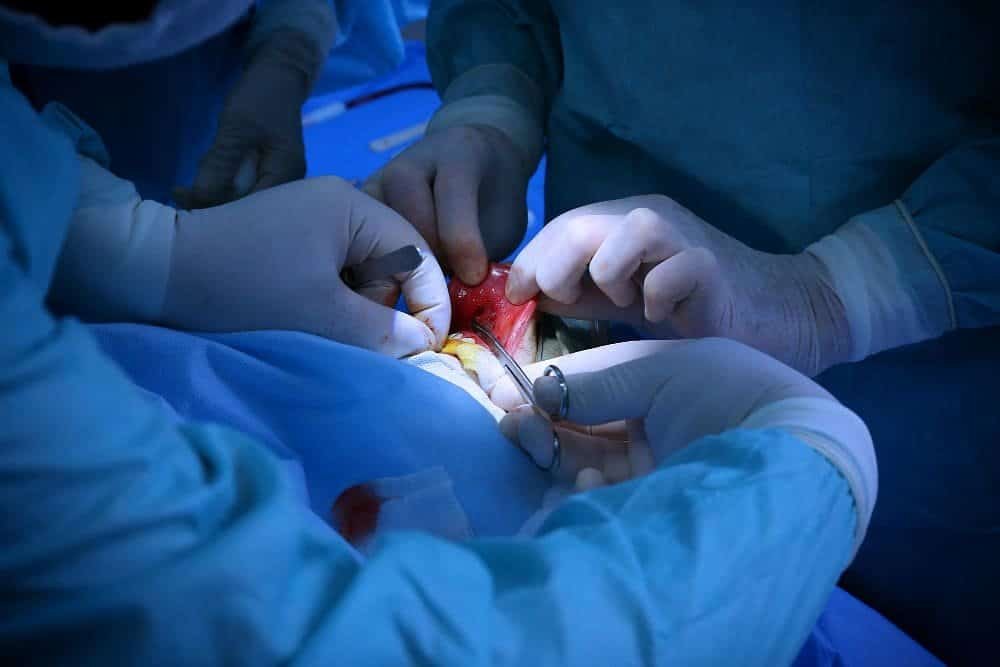Many men dealing with scrotal swelling or fertility concerns wonder about outcomes when considering treatment options. The statistics for varicocele embolization success rate show encouraging results, with most patients experiencing relief from symptoms and improved fertility potential through this minimally invasive approach.

Understanding Varicoceles: More Than Just Swelling
A varicocele is a common condition affecting the male reproductive system, characterized by the enlargement of veins within the loose bag of skin that holds the testicles (the scrotum). These enlarged veins are part of the pampiniform plexus, a network responsible for draining blood from the testicles. When valves inside these veins fail, blood doesn’t flow correctly and pools, causing the veins to swell. This is similar to a varicose vein you might see in a leg.
While some men have a varicocele and experience no issues, others face noticeable symptoms. These can include:
- A dull, aching pain or discomfort in the scrotum, especially after standing for long periods or physical exertion.
- Visible swelling or a feeling of a “bag of worms” in the scrotum due to the enlarged veins.
- A difference in size between the testicles, with the affected one often being smaller (testicular atrophy).
The left side is more commonly affected due to the anatomy of the internal spermatic vein on that side. For many men, a varicocele is identified during a routine physical exam or an evaluation for male infertility.
Why is Varicocele Treatment Necessary?

The decision to treat a varicocele depends on the symptoms and the patient’s goals. The main reasons for seeking intervention are clear. A varicocele is the most common correctable cause of male infertility, and its correction can significantly improve sperm quality and function. The increased blood pooling raises the temperature in the scrotum, which can negatively impact sperm production and health.
Beyond fertility, symptomatic varicoceles can cause chronic pain and discomfort that interfere with daily life. For adolescents, an untreated varicocele can hinder testicular growth. Therefore, treating the abnormal vein flow is crucial for alleviating pain, restoring normal testicular function, and improving fertility outcomes. The primary goal of any varicocele repair procedure is to stop the retrograde (backward) blood flow in the problematic spermatic veins.
An Overview of Modern Varicocele Treatments
Historically, the only option for varicocele repair was open surgery. Today, patients have several advanced options, each with different success rates and recovery experiences. The two primary approaches are surgical varicocelectomy and percutaneous embolization.
- Surgical Varicocelectomy: This surgical approach involves a surgeon making an incision to tie off the abnormal veins. Microsurgical varicocelectomy is considered the standard of care for the surgical technique, using a high-powered microscope to precisely identify and ligate the problematic veins while sparing arteries and lymphatic channels. It is an effective procedure but requires general anesthesia and involves a longer recovery period.
- Percutaneous Embolization: This is a nonsurgical, minimally invasive alternative performed by an interventional radiologist. Instead of an incision, the radiologist uses image guidance to navigate a tiny tube (catheter) to the affected vein and block it from the inside. This technique has become an increasingly attractive option for patients.
A Deep Dive into Varicocele Embolization 🔎
Percutaneous embolization, also known as transcatheter embolization, is a highly sophisticated outpatient procedure designed to block the enlarged veins causing the varicocele. It is performed in an interventional radiology suite. The radiologist makes a tiny nick in the skin, usually in the groin or neck, and inserts a catheter into a large vein.
Using real-time X-ray imaging, the catheter is guided directly to the internal spermatic vein. Once in place, the radiologist releases a special embolic material—often tiny coils, a sclerosing agent, or a combination—into the vein. This material effectively plugs the vein, stopping the backward flow of blood. The body then naturally redirects blood flow to healthy, nearby veins. The entire procedure is typically completed in about an hour, and patients can go home the same day.
Decoding the Varicocele Embolization Success Rate 📈
When we discuss the success rate of embolization, it’s important to distinguish between two key metrics reported in published literature and medical studies: technical success and clinical success.
Technical Success Rate
The technical success rate refers to whether the interventional radiologist can successfully perform the procedure as planned—that is, navigate the catheter to the target vein and deploy the embolic material to block it.
The technical success for percutaneous embolization of the internal spermatic vein is exceptionally high, with reported rates often exceeding 95 percent. A technical failure is rare and is typically associated with complex vein anatomy that prevents catheterization. However, with modern equipment and an experienced radiologist, this is an uncommon experience. The anterograde or retrograde catheterization approach can be used to ensure the procedure is successful.
Clinical Success Rate
The clinical success rate is the metric that matters most to patients. It measures whether the treatment successfully resolved the issue it was meant to address. Clinical success is defined by:
- Relief from Pain: For symptomatic patients, success means the elimination or significant reduction of testicular pain and swelling.
- Improvement in Fertility: For men with infertility, success is measured by improvement in semen parameters (sperm count, motility, and morphology) and, ultimately, achieving pregnancy.
The clinical success for varicocele embolization is excellent and comparable to the outcomes of microsurgical varicocelectomy. Numerous studies have shown that a significant majority of patients experience complete pain relief. For fertility, improving semen parameters is commonly seen following the procedure, which can lead to natural pregnancy. The durable treatment effect makes it a promising intervention.
Low Recurrence Rate: A Durable Solution
One of the most significant advantages of modern embolization is its very low recurrence rate. Recurrence happens when the blocked veins reopen or when new, smaller veins take over and enlarge. The recurrence rate after embolization is low, often in the single digits.
Proper selective catheterization by an experienced interventional radiologist is key to preventing recurrence. By precisely blocking all contributing abnormal veins, embolization provides a lasting and durable solution. This rate is comparable, and in some studies, even better than certain types of surgical repairs, especially when a procedure is performed by less experienced hands or if a prior surgery has failed.
Embolization vs. Surgery: Why Many Patients Choose Embolization
When comparing treatments, many factors make embolization an attractive alternative to surgery.
| Feature | Varicocele Embolization | Microsurgical Varicocelectomy |
| Procedure Type | Minimally invasive, nonsurgical | Surgical, requires incision |
| Anesthesia | Local anesthesia and light sedation | General or spinal anesthesia |
| Recovery Time | Return to normal activities in 1-2 days | 2-3 weeks, with restrictions |
| Incision | Tiny nick in the skin, no stitches | 1-2 inch incision in the groin |
| Hospital Stay | Outpatient procedure (go home same day) | Usually outpatient, sometimes overnight |
| Risk of Complications | Very low risk of infection or hydrocele | Higher risk of infection, hydrocele, and arterial injury |
Percutaneous embolization avoids the risks associated with general anesthesia and the post-operative pain and longer recovery of a surgical incision. For patients who have had a failed surgical varicocelectomy, embolization is often the preferred technique for a repeat intervention.
Are You a Suitable Candidate for Varicocele Embolization?
Varicocele embolization is a suitable option for most men diagnosed with a varicocele that requires treatment. You may be an ideal candidate if you:
- Have a symptomatic varicocele causing chronic pain or discomfort.
- Are a couple experiencing male factor infertility linked to a varicocele.
- Have a varicocele that has recurred after a prior surgery.
- Wish to avoid the risks and recovery time associated with a surgical procedure.
The decision on the best approach should be made after a thorough evaluation and discussion with a specialist. An experienced interventional radiologist like Dr. Samir Abdel Ghaffar can conduct a review of your medical history and imaging to determine if embolization is the right choice for you.
Your Treatment Journey with an Experienced Specialist ✨
The success of any medical procedure, including varicocele embolization, heavily depends on the skill and experience of the physician. Interventional radiologists are specialists in minimally invasive, image-guided procedures. Choosing a highly experienced practitioner ensures the best possible outcomes, including the highest clinical success and lowest risk of recurrence or complications.
Dr. Samir Abdel Ghaffar is a consultant in interventional radiology who specializes in treating varicoceles using this state-of-the-art embolisation technique. His expertise ensures that patients receive the highest standard of care, from initial consultation to post-procedure follow-up.
The Final Word on Varicocele Embolization ✅
Varicocele embolization has been established as a safe, effective, and highly successful treatment for varicoceles. With technical success rates well over 90 percent, it stands as a powerful intervention. Its clinical outcomes are comparable to the best surgical procedures, offering significant pain relief and promising improvements in fertility.
Coupled with a low recurrence rate, minimal discomfort, and a quick recovery, percutaneous embolization represents a major advancement in medical treatments for this common condition. If you are dealing with a varicocele, exploring this minimally invasive option could be your first step toward lasting relief and better health.
 العربية
العربية 

